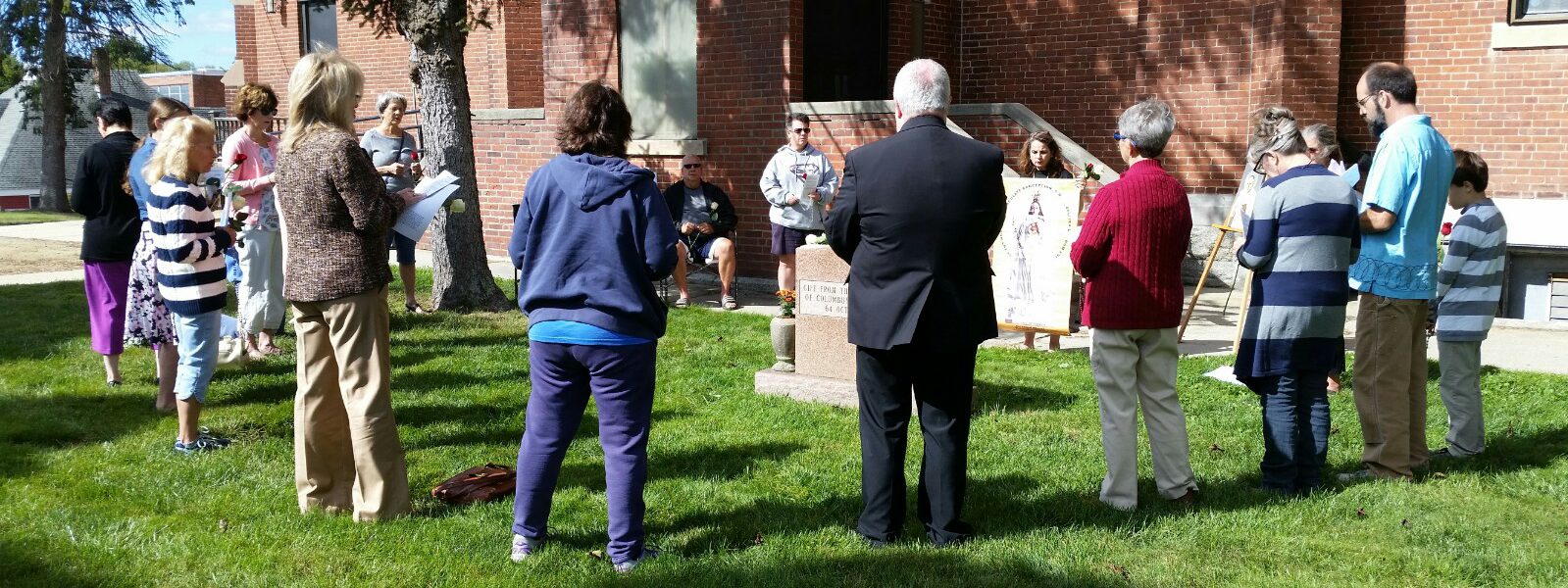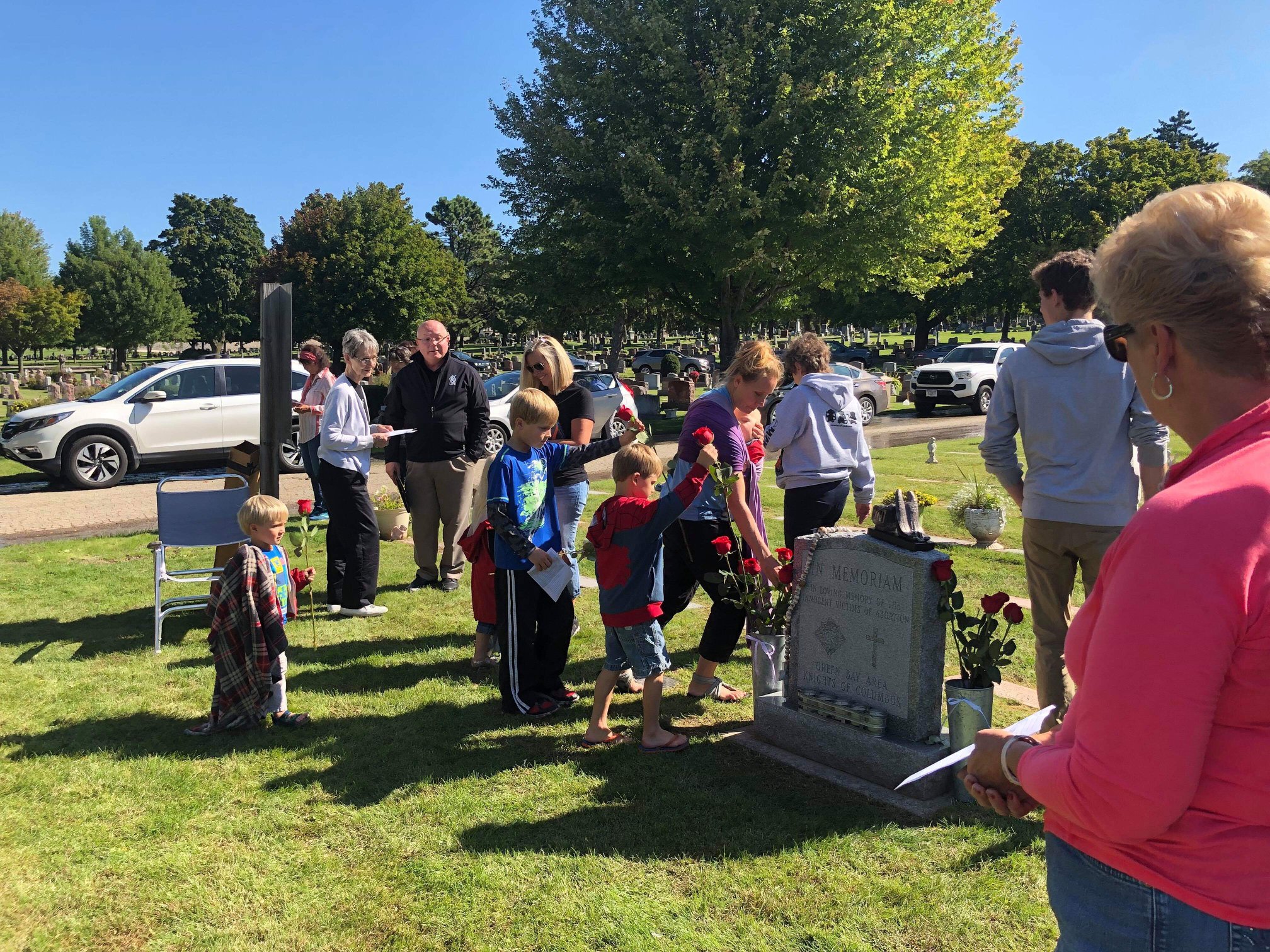It is important for you to carefully document your National Day of Remembrance memorial service to bolster the nationwide impact of this event. If the local media give scant or no coverage to your memorial service, you can still disseminate your own account of it—including photos and video—through every possible channel. Your record of the event also helps the national team assess the success of the event and plan for next year’s Day of Remembrance.
Taking photos and video
A picture is worth a thousand words—and a video worth a hundred thousand—but not if they’re an afterthought! Plan to get great photos and videos of your memorial service so you can share the story of this solemn event most effectively.
Take lots of photos of your memorial service
Choose a cameraman who knows how to use his or her camera, including how to take a nicely composed picture, how to download images off the camera to a computer or tablet and how to upload them to Facebook, Picasa, Flickr or another photo sharing site.
The cameraman’s only job should be taking pictures, and he or she should take lots of them. It takes dozens of shots just to get a few good ones, and nobody ever lamented taking too many pictures.
Some of the shots your cameraman may wish to capture include:
- Pictures of the emcee and each guest speaker
- Crowd shots showing all who attended
- Close-ups of attendees of different ages and backgrounds
- The gravestone or memorial marker itself
- Pictures that show all that took place (singing, laying of flowers, prayers, etc.)
Remind the cameraman to charge up the camera battery before the memorial service (and a spare, if possible) and to make sure the camera memory card is completely empty (a spare card is always a good idea, too).
Shoot video of your memorial service
If possible, assign a videographer to take footage of the memorial service and, possibly, conduct interviews of your special guests and random attendees. As with the cameraman, choose someone who knows how to use his or her camera, how to dowload videos off the camera to a computer or tablet and how to upload them to YouTube, Vimeo or another video-sharing site.
The videographer’s only job should be taking video footage, and he or she should be filming continuously.
Remind the videographer to charge up the camera battery before the Day of Remembrance (and a spare, if possible) and to make sure the camera memory card is completely empty (a spare card is always a good idea, too).

Be sure that your videographer shoots only horizontal, or “landscape” video (see photo to the right), which is much more pleasant to view than “vertical” or “portrait” video. Videos shot in “portrait” mode create a “keyhole” effect, as if the viewer is peering through a keyhole, because so much of the surrounding context is missing.
A stand-alone video camera will shoot horizontal video automatically, but most videos are now shot with smartphones. You must turn your phone sideways in order to get horizontal video.
Sharing the story
After the Day of Remembrance, the national team will be in touch to find out out things went—including how many people attended your memorial service and whether you got any media coverage. You can also share the story of your event even more widely through social media.
Share photos and video of your service
After your memorial service, please email two or three of your best photos to the national team at info@abortionmemorials.com. (Note: Please do not share photos with the national team via Google Drive, Dropbox, etc.)
After you have emailed your photos to the national team, you may also wish to share some of your photos—and videos if you have them—on the National Day of Remembrance Facebook page. This will help unite all the memorial services around the country into one powerful event.
Here are some instructions on how to share photos on Facebook and how to share videos on Facebook.
Take an accurate headcount
It is important to take an accurate headcount at your memorial service. Your count will be added to all those from around the country to show the overall impact of the National Day of Remembrance for Aborted Children.
Don’t just take a guess at how many people are in attendance. Even experienced activists will typically underestimate the size of crowds smaller than about 200 people, but overestimate larger crowds.
You can’t get a good headcount without actually counting. That’s why it’s important to assign someone the job of headcounter.
There are two ways to get a good count, depending on roughly how large the crowd is:
Option 1: Count every person in a crowd of up to a few hundred. Be sure to include children and babies in your count. You’ll be surprised at how far off your “best guess” was when you actually take a count.
The headcounter and a helper might mentally split the crowd in half and each count one of the halves, and then add them together.
Option 2: Count “samples” for larger crowds. For crowds more than a few hundred it becomes difficult to count each individual participant. In fact, this difficulty may signal that you should instead use the “sampling” method.
Sampling means mentally breaking the crowd into several roughly equal pieces, counting the people in a few of those pieces, averaging them, and extrapolating the headcount from there.
Send your headcount to the National Day of Remembrance headquarters as soon as possible after the event. Either email your headcount to or text it to 773-887-2643. Either way, include your city and the name of the gravesite or memorial with the headcount.
Keep track of news stories about your memorial service
Keep a list of links to all the media stories that you find. To help keep this list organized, record both the link to the story and the headline of the story. You should also take note of the reporter’s name for future reference: here’s someone who is interested in our mission and has a vested interest in keeping up with future developments.
Clip out any hard copies from the local newspaper and save them in a safe place.

